
Park University International Center for Music Presents Friday, November 1, 2024 • 7:30 p.m.
FALL CONCERT WITH GUEST CONDUCTOR LAURA JACKSON





Park University International Center for Music Presents Friday, November 1, 2024 • 7:30 p.m.
FALL CONCERT WITH GUEST CONDUCTOR LAURA JACKSON





Dear Esteemed Patrons and Lovers of Music,
As we embark on a new season at the International Center for Music at Park University, I find myself reflecting on the profound impact that music has on our lives. It’s not just the sound that resonates, but the emotion and dedication behind every performance that truly moves us. As Artistic Director and founder of this institution, I am continuously inspired by the exceptional talents of our students, faculty, and guest artists who pour their hearts into their craft. Kansas City is a remarkable place, home to a community that cherishes and supports the arts with unparalleled enthusiasm. Our concert series is designed to bring you closer to the magic of live music, offering an intimate and accessible way to experience the brilliance of our performers.
Our mission remains steadfast: to create an environment where musical excellence thrives, free from the distractions and financial burdens that often hinder artistic growth. At Park ICM, we are committed to nurturing the next generation of musicians with the same intensity and focus that shaped my own musical journey.
This season, we are proud to present a lineup that includes not only our extraordinary students and faculty but also internationally acclaimed guest artists whose contributions to the world of music are nothing short of legendary. In keeping with our mission, we will also introduce you to the newborn stars, the bright talents who represent the future of classical music. Each concert is an opportunity to witness the convergence of passion, discipline, and talent, creating moments that linger in the heart and mind.
I invite you to join us in celebrating the transformative power of music. Your presence and support are invaluable to us, fueling our drive to reach new heights of artistic achievement. Together, let’s create a symphony of shared experiences that transcends time and space.
With deep gratitude,


Stanislav Ioudenitch Founder and Artistic Director International Center for Music at Park University
P.S. Each performance is a manifestation of our shared love for music. Your presence and applause amplify our drive to elevate the art form further.
Johann Sebastian Bach (1685-1750)
I. without tempo designation
II. Adagio
III. Allegro
I. Boisterous Bourrée
II. Playful Pizzicato
III. Sentimental Saraband
IV. Frolicsome Finale
Benjamin Britten (1913-76)
I. Moderato
II. Tempo di Valse
III. Scherzo (vivace)
IV. Larghetto
V. Vivace
Antonin Dvorak (1841-1904)

Laura Jackson serves as music director and conductor of Nevada’s Reno Philharmonic Orchestra. She wins praise for her passionate artistry, creative leadership, and commitment to community engagement. Laura is known nationally and internationally for both her innovative composer-in-residence projects and vibrant performances of traditional repertoire. She has cemented the Phil’s place in the hearts of northern Nevadans while also raising the institution to new musical heights and national visibility.
In addition to concerts with the Reno Phil, Ms. Jackson guest conducts nationally and internationally. She has performed with the symphonies of Alabama, Atlanta, Baltimore, Berkeley, Charlottesville, Detroit, Hartford, Hawaii, Orlando, the Philippines, Phoenix, Richmond, San Antonio, Toledo, Toronto, Windsor, and Winnipeg in addition to concerts with the Philly Pops and L’Orchestre symphonique de Bretagne in France.
Jackson recorded Michael Daugherty’s Time Cycle on Naxos with the Bournemouth Symphony in partnership with Marin Alsop, and served as the first American to guest conduct the Algerian National Orchestra in 2013.
Jackson served as the first female assistant conductor of the Atlanta Symphony Orchestra from 2004-7. Prior to her appointment in Atlanta, she studied conducting at the University of Michigan and spent summers as the Seiji Ozawa Conducting Fellow at the Boston Symphony Orchestra’s Tanglewood Music Center in 2002 and 2003. Ms. Jackson spent her early childhood in Virginia and Pennsylvania before moving at age 11 to Plattsburgh, NY, where she grew up waterskiing, swimming, and sailing on Lake Champlain. She fell in love with the violin in public school, later attending the North Carolina School for the Arts to finish high school. She pursued an undergraduate degree at Indiana University where she studied both violin and conducting before moving to Boston in 1990 to freelance as a violinist and teach at Phillips Exeter Academy in New Hampshire.

Originally from Reading, Mass., Steven McDonald, director of orchestral activities, has served on the faculties of the University of Kansas, Boston University and Gordon College. While in Boston, he conducted a number of ensembles, including Musica Modus Vivendi, the student early music group at Harvard University. McDonald also directed ensembles at the Massachusetts Institute of Technology, serving as founder and music director of the Summer Opera and Independent Activities Period Orchestra, and conductor of the MIT Chamber Orchestra and the Gilbert and Sullivan Players. At the University of Kansas, McDonald served as assistant conductor of the KU Symphony, and was the founder and music director of the Camerata Ensemble of non-music majors, and of the chamber orchestra “Sine Nomine,” a select ensemble of performance majors. Additionally, he has conducted performances of the KU Opera. He has also served as vocal coach at the Boston University Opera Institute and at Gordon College.
McDonald served as music director of the Lawrence (Kan.) Chamber Orchestra from 2007-14, during which time the group transformed into a professional ensemble whose repertoire featured inventive theme programs and multimedia performances. In 2009, he was selected to conduct the Missouri All-State High School Orchestra, and in 2011 was the first conductor selected as guest clinician at the Noel Pointer Foundation School of Music which serves inner-city students in Brooklyn, N.Y. An avid proponent of early music, McDonald has also taught Baroque performance practice at the Ottawa Suzuki Strings Institute summer music program, and regularly incorporates historically informed practice into his performances. McDonald is a graduate of the Boston University School for the Arts, the Sweelinck Conservatory of Amsterdam (The Netherlands) and the University of Kansas School of Fine Arts.
STEVEN MCDONALD, MUSIC DIRECTOR
Mumin Turgunov, concertmaster*
Yuren Zhang
Vincent Cart-Sanders*
Ilkhom Mukhiddinov
Sun-Young Shin
Ilvina Gabrielian
Aviv Daniel, principal *
Yin-Shiuan Ting
Yiyuan Zhang
Jose Ramirez
Casey Gregory
Matthew Bennett
Diyorbek Nortojiyev, principal*
James Farquhar*
Nikita Korzukhin*
Mardon Abdurakhmonov
Otabek Guchkulov
Ainaz Jalilpour
Jordan Proctor Bass
Kassandra Ferrero*
Krista Kopper
Viola
Christian dos Santos, principal *
Victor Diaz*
Iana Korzukina*
Samin Golozar
*playing in the Brandenburg Concerto
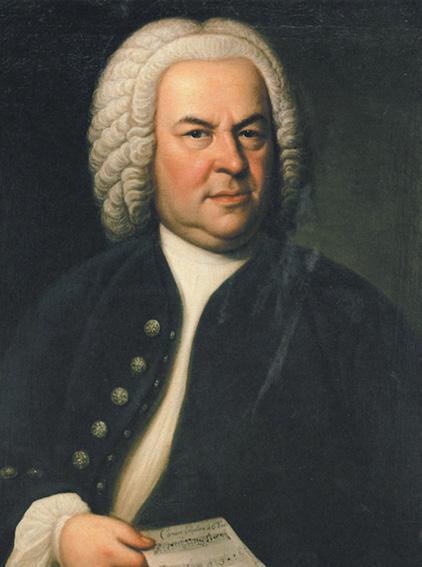
Brandenburg Concerto No. 3 in G major, BWV 1048
Bach himself compiled the six Brandenburg Concertos into a “set” in 1721, copying them from previous, and disparate, sources. A few years earlier, the composer had visited the Margrave of Brandenburg in Berlin, having traveled there to purchase a harpsichord for his patron, Prince Leopold of Anhalt-Cöthen, in whose court he was working at the time.
Evidently the Margrave, the music-loving youngest son of the Prince Elector, was impressed with Bach’s music and, upon the composer’s departure, requested that he send more of his works when he got home, presumably for the court’s perusal.
Little did the young Margrave know that Bach would take this opportunity to compile one of the greatest collections in the history of Western music — one that 300 years later remains a favorite of musicians worldwide. Accompanying the manuscript was a letter, written in a tone so obsequious that it causes us to wonder whether Bach was angling for a job:
“To His Royal Highness Christian Ludwig, Margrave of Brandenburg … Sire: Since I had the happiness of playing at the command of Your Royal Highness a few years ago, and I saw that you took some pleasure in the small talents for music that Heaven has given me, and that, in taking leave of Your Royal Highness, you did me the honor of asking that I send you several of my compositions: therefore, following your gracious command, I take the liberty of offering my most humble respects to Your Royal Highness with the present concertos, which I have arranged for several instruments.”
Publishers of the 17th and 18th centuries often printed works in groups of six, possibly because it made a volume more varied and more marketable. With Bach one has the feeling he was consciously trying to invest his “sets of six” with as much artistry that he could muster within a particular style or genre: The six French Suites for harpsichord summarize much of what was possible in the French dance style, and the English Suites and Partitas do something similar for
their national traditions. The six Cello Suites contain a treasure of possibilities, as do the magisterial Sonatas and Partitas for Solo Violin. The Brandenburgs are no exception, representing a sort of compendium of the richest variety of “concerted” music imaginable.
Christoph Wolff has remarked that Bach’s comment on having written these concerts for “several instruments” was a woeful understatement. “The modest title does not begin to suggest the degree of innovation exhibited in the daring combinations,” he writes. “Every one of the six concertos set a precedent in its scoring, and every one was to remain without parallel.”
Concertos 1, 3, and 6 are ensemble concertos, with smaller groups pitted against each other or the tutti group, while Nos. 4 and 5 are concertos for solo instruments. Concerto No. 3 in G major is unique in that it divides the strings into three sets of three each: violins, violas, and cellos are placed in front of a “continuo” body of keyboard and usually cello and/or double bass. As motifs are passed from one trio to the next, from high to low and back again, the sound moves about the stage in a manner both sonically and visually arresting. A second “movement” consists here of two chords that are, often, embellished before a full charge into the ferocious finale.

Britten was born in the modest coastal town of Lowestoft on the Suffolk seashore, a dentist’s son with a music-loving mother, three older siblings, and a knack for cricket. In the midst of this ordinary household grew a boy of extraordinary musical gifts who by the age of five was making early attempts at composing, and by 10 was making steady progress on piano and viola. As he himself wrote of his childhood, at the time that his Simple Symphony was recorded in the mid-1950s:
Photo: Emil Matveev
“He worked his way up the school slowly and steadily, until at the age of 13 he reached that pinnacle of importance and grandeur, never to be quite equaled in later days: the head of the Sixth, head-prefect, and Victor Ludorum [a trophy for the best athlete or team in the class]. But — there was one curious thing about this
boy: he wrote music. His friends bore with it, his enemies kicked a bit but not for long (he was quite tough), the staff couldn’t object if his work and games didn’t suffer. He wrote lots of it, reams and reams of it.”
Britten showed such musical promise at school that he won a composition scholarship at the Royal College of Music, which he entered in the fall of 1930. There he studied with two major figures of early-20th-century English music, John Ireland and Arthur Benjamin, but at the same time he professed to the profound impact exerted by his acquaintance with music of Stravinsky, Shostakovich, and Mahler. After graduation he composed scores for theater, films, and radio.
His first three published works were written while he was still at student at Royal College: the Sinfonietta (Op. 1), the Phantasy Quartet (Op. 2), and A Boy was Born (Op. 3) for chorus with organ. After graduation he wrote the Simple Symphony, a nostalgic look back on his compositional juvenilia, which he dedicated to his longtime viola teacher, Audrey Alston.
“This ‘Simple Symphony’ is entirely based on material from works which the composer wrote between the ages of nine and 12,” Britten wrote. “Although the development of these themes is in many places quite new, there are large stretches of the work which are taken bodily from the early pieces — save for the re-scoring for strings.” The four-movement work for strings was first performed by the Norwich String Orchestra in March 1934.
The composer has indicated, in the printed score, which early works he has cited — songs and piano works dating from 1923 to 1927, two per movement. In each segment, a vigorous theme is paired with a somewhat reflective one, after which the spirit of both is skillfully combined. The Boisterous Bourée is both elegant and kenetic, while the Playful Pizzicato reveals unusually savvy harmonic writing. The Sentimental Saraband grows from a plaintive tune from 1925 (its mournful sophistication seeming remarkable for a boy of 12), while the Frolicsome Finale (Prestissimo con fuoco) demonstrates a grown-up feel for expansiveness and pacing.

Dvořák composed two serenades: Ironically it was the later work (Op. 44) that was in more keeping with the older tradition of Harmoniemusik — 18th-century “field music” scored chiefly for wind instruments so that it could be performed outdoors at courts of noble households. His earlier work, Op. 22, is more in line with progressive 19th- and 20th-century traditions of the string serenade that were taken up by Tchaikovsky, Joseph Suk, Edward Elgar, and others.
He composed Op. 22 at around the time that his music was coming to the attention of a broader public. Having already established himself as a composer and orchestral musician in Prague, in 1874 he entered his music into competition for the Austrian State Prize in Vienna. He won, and as a result of the fellowship, his music came to the attention of the critic Edward Hanslick and, eventually, Johannes Brahms.
As part of his initial entrance repertoire (Dvořák would later win the stipend two more times) he had submitted 15 works, including the Third and Fourth Symphonies, a song cycle, and several overtures. Brahms was astonished at the quality of the scores, and he and Hanslick both encouraged Dvořák to move to the imperial capital for the sake of his career — a suggestion that the Czech master kindly dismissed.
The Prize does seem to have inspired Dvořák to greater heights, however: In the ensuing years he produced superb music, including the Fifth Symphony, the Piano Trio No. 1, the Second String Quintet, and the Serenade, Op. 22. (Dvořák was so inspired that he composed the serenade in just two weeks.)
Soon afterward, Brahms would recommend the music to his own publisher, Simrock, and Dvořák’s Slavonic Dances would become a huge commercial success. Dvořák would go on to win the Austrian State Prize stipend two more times, but in subsequent years it was the praise and approval of Brahms himself, as much as prize money, that uplifted the only slightly younger composer.
The Serenade received its premiere in Prague on December 10, 1876, with Adolf
Čech conducting the combined orchestras of the Czech and German theaters. It was published in a piano duet arrangement in 1877 in Prague and later in full score in Berlin.
It is cast in five movements of fanciful, widely variety character — a procedure that already suggests a less formal mood. Previously themes reoccur throughout, lending a sophisticated sense of unity.
The first is a gentle Moderato, which presents a pastoral theme before launching into more rigorous thematic material. The Tempo di valse has the sensation of a Viennese waltz but at the same time injects the spirit of Bohemian dance that a Dvořák specialty.
The Scherzo trips over itself with joyous energy, and the Larghetto provides a moment’s rest with a plaintive tune of ingenious design. The Finale (Allegro vivace) is perhaps the most “Bohemian” movement, both in character and in rhythmic design; it also refers to previous themes by way of rounding out the whole.
—Paul Horsley



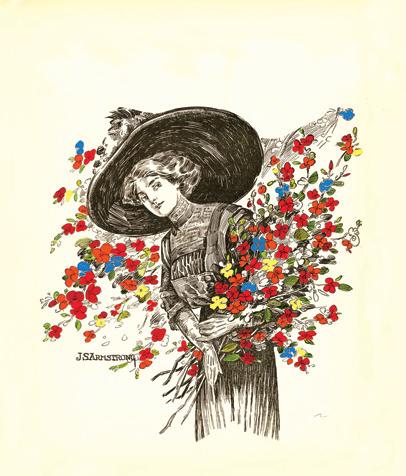


Stanislav Ioudenitch, Founder & Artistic Director, Piano Studio
Behzod Abduraimov, Artist-in-Residence
Gustavo Fernandez Agreda, ICM Coordinator
Peter Chun, Viola Studio
Lolita Lisovskaya-Sayevich, Director of Collaborative Piano
Steven McDonald, Director of Orchestra
Ben Sayevich, Violin Studio
Daniel Veis, Cello Studio
Support the ICM, enjoy beautiful music and special events just for members.
Patrons Society members enjoy exclusive invitations to group events including meeting the talented ICM artists.

For more information on how to join our Patrons Society, scan the QR code with your mobile device camera.

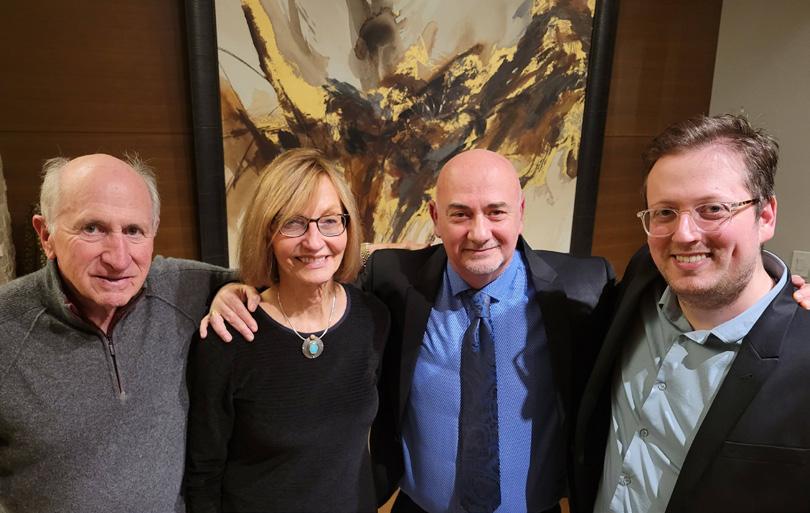

The Park University International Center for Music’s Patrons Society was founded to help students achieve their dreams of having distinguished professional careers on the concert stage.
Just as our faculty’s coaching is so fundamental to our students’ success, our Patrons’ backing provides direct support for our exceptionally talented students, concert season, outreach programs and our ability to impact the communities we serve through extraordinary musical performances.
We are continually grateful for each and every one of our Patrons Society members. For additional information, please visit ICM.PARK.EDU under “Support Us.”
We gratefully acknowledge these donors as of October 1, 2024.
SUPERLATIVE
Brad and Marilyn Brewster *
Steven Karbank
Benny and Edith Lee
Ronald and Phyllis Nolan
John and Debbie Starr
Steven and Evelina Swartzman
Jerry White and Cyprienne Simchowitz *
SUPREME
Jeffrey Anthony
Brad and Theresa Freilich
Shirley and Barnett C. Helzberg Jr. *
Holly Nielsen
Steinway Piano Gallery of Kansas City
Gary and Lynette Wages
Vince and Julie Clark
Stanley Fisher and Rita Zhorov*
Susan Morgenthaler *
Kay Barnes and Thomas Van Dyke
Lisa Browar
Mark and Gaye Cohen
Suzanne Crandall
Charles and Patty Garney *
Doris Hamilton and Myron Sildon
Colleen and Ihab Hassan
Lisa Merrill Hickok
William and Regina Kort
Jackie and John Middelkamp
Kathleen Oldham
Kevin and Jeanette Prenger, ’09 / ECCO Select
James and Laurie Rote *
Stanley and Kathleen Shaffer
Guy Townsend
John and Angela Walker *
Nicole and Myron Wang*
Phil and Barbara Wassmer *
* 2024-2025 Member
The Park University International Center for Music Foundation exists to secure philanthropic resources that will provide direct and substantial support to the educational and promotional initiatives of the International Center for Music at Park University. With unwavering commitment, the Foundation endeavors to enhance awareness and broaden audiences across local, national, and international spheres.
Vince Clark, Chair
Steve Karbank, Secretary
Marilyn Brewster
Lisa Browar
Stanley Fisher
Brad Freilich
Ron Nolan
Shane Smeed
Benny Lee, Treasurer
John Starr
Steve Swartzman
Guy Townsend
Angela Walker
Karen Yungmeyer


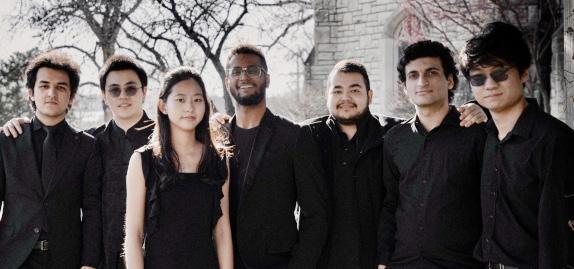
Park University International Center for Music Presents
November 14, 2024 | 7:30 p.m. | 1900 Building
See the students of the Park ICM String Studios in concert! Our talented string students will take the stage to present a diverse and rich program, showcasing the broad spectrum and emotional depth of compositions written for string instruments.

For additional information, visit ICM.PARK.EDU
General Admission $30. Students $10 with I.D.

Park University International Center for Music
Following the incredible success of our 2nd annual holiday concert last year, International Center for Music Orchestra at Park University returns to usher in the holiday season. Under the direction of Steven McDonald, the music director of the ICM Orchestra, anticipate being whisked away to the very core of the holiday spirit.
Don’t delay – secure your seats today to guarantee your presence at this enchanting musical affair! It’s an evening that not only delivers exquisite music but also fosters a profound sense of unity and community, embodying the true essence of the holiday season.
Saturday, December 7, 2024 • 7:30 p.m.
Make it an evening! Visit charming Parkville, Missouri for dinner before the concert.


Tickets are FREE with reservation. Scan Here!






Imagine hearing — and seeing — every keystroke of a world-class piano performance in your own home. With spirio , you can enjoy music captured by renowned pianists, played with such nuance, power, and passion that it is utterly indistinguishable from a live performance.
Thousands of recordings by steinway artists are available at the touch of a button on the included iPad.
The library of music, videos, and playlists expands monthly and spans all genres. In addition to today’s greatest musicians, spirio delivers historic performances by steinway immortals , including Duke Ellington, Glenn Gould, Art Tatum, and many more.






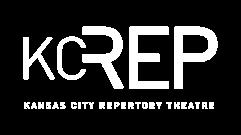




You deserve the best care in the region. We are proud to be consistently recognized as the best, year after year.
As the best hospital in Kansas and in Kansas City, we deliver unparalleled outcomes and world-class care.
We put you first because we genuinely care. Our dedication to our patients drives us to provide exceptional outcomes and the very best service – the kind of care that makes you feel seen, heard and valued.
We are trusted experts who believe you deserve unmatched care. With unmatched care comes unrivaled outcomes. Our relentless pursuit of excellence fuels us to make a lasting di erence for patients, their families and the entire region.
We are proud to still be the No.1 hospital in Kansas and in Kansas City. We are also the only hospital in the region to have any medical and surgical adult specialties that ranked among the top 50 nationwide, with 6 nationally ranked specialties.










When you choose the best, you receive excellent care from a compassionate team of experts. Discover what sets the best care in the region apart. Schedule an appointment at 913-588-1227 or visit KansasHealthSystem.com/StillTheBest.























